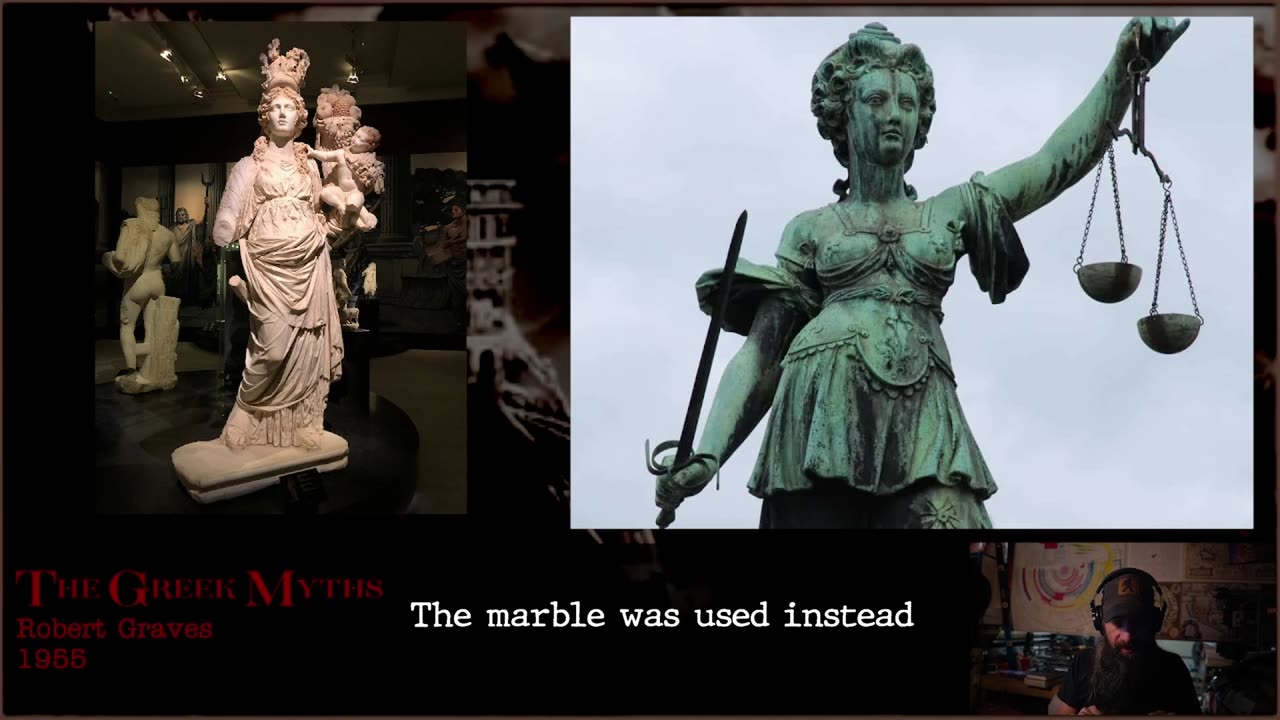Premium Only Content

The Greek Myths - B1 - 32
The Greek Myths - B1 - 32
This video discusses the characters Tiki and Nemesis from Greek mythology, focusing on their attributes, their relationship with Zeus, and their symbolic meanings. Tiki is portrayed as a capricious figure granting fortune, while Nemesis represents revenge and balance, particularly emphasizing justice against arrogance. The video explores their origins, transformations, and cultural significance, detailing how they evolved in mythological narratives from pre-Hellenic to Hellenic traditions.
Key Points:
The Nature of Tiki
Tiki, the daughter of Zeus, is responsible for determining human destinies, often depicted as unpredictable, rewarding some with abundance and depriving others of wealth. This symbolizes the randomness of fortune and the consequences of pride, especially if one fails to honor the gods or assist the less fortunate.
Role of Nemesis
Nemesis, often associated with divine retribution, is described as a goddess whose role is to restore balance against those who boast of their achievements without humility. She embodies the idea of justice and moral order, acting against hubris and ensuring that fortune has its consequences.
Zeus and Nemesis's Myth
The video also recounts the myth where Zeus pursued Nemesis, resulting in her transformation to escape him. This culminated in the birth of Helen from an egg laid by Nemesis, highlighting themes of desire, transformation, and the intersection of fate and choice.
Cultural Transformation of Nemesis
Originally a nymph associated with life and death, Nemesis was redefined by philosophers to represent moral balance against excess. This academic shift influenced her worship and the symbolic meanings tied to her ancient rituals relating to natural cycles and agricultural fertility.
Symbolic Objects and Rituals
The discussion includes significant symbols like Nemesis's apple bow and the wheel, linking them to concepts of time and the seasonal cycles. These artifacts are representative of her role in the cycles of life, fortune, and agricultural practices, emphasizing her connection to both nature and divine order.
-
 LIVE
LIVE
GritsGG
13 hours agoRumble Customs! 3515 Ws! 🫡!
272 watching -
 5:59:47
5:59:47
SpartakusLIVE
8 hours agoThe HUGEST Brain (not forehead) delivers Saturday SPARTOONS || Variety Later - Shadow of Mordor
181K4 -
 2:34:20
2:34:20
Barry Cunningham
9 hours agoPRESIDENT TRUMP WELCOMES FOOTBALL SEASON! AND MORE BREAKING NEWS!
72.6K45 -
 54:47
54:47
Side Scrollers Podcast
13 hours agoSide Scroller Presents KING OF THE KART | MASSIVE MARIO KART TOURNAMENT
41.7K -
 4:12:33
4:12:33
Mally_Mouse
13 hours ago🔥🍺Spicy HYDRATE Saturday!🍺🔥-- Let's Play: Baldur's Gate!
34.2K3 -
 2:26:32
2:26:32
BooniesHQ
8 hours agoGame Of SKATE Shaun Hover Vs. Jeff DeChesare: Boonies Skate Night 1
108K5 -
 LIVE
LIVE
MissesMaam
3 hours agoAmong Us 3D (ft. Rumblers) 💚✨
69 watching -
 LIVE
LIVE
S0lidJ
4 hours ago🟢Live - S0lidj - Solo Snipes
54 watching -
 17:08
17:08
Exploring With Nug
1 day ago $2.74 earnedMassive Thunderstorm Hits During Search for Missing Georgia Woman!
27.5K1 -
![RCP #29🤟 [FR/ENG] 🤟 Satisfactory trying to grow a beautiful Factory, possible other Game later 🤟](https://1a-1791.com/video/fww1/98/s8/1/o/q/N/d/oqNdz.0kob-small-RCP-29-FRENG-Satisfactory-t.jpg) 8:05:52
8:05:52
Deaf Gamer Girl
10 hours agoRCP #29🤟 [FR/ENG] 🤟 Satisfactory trying to grow a beautiful Factory, possible other Game later 🤟
3.97K